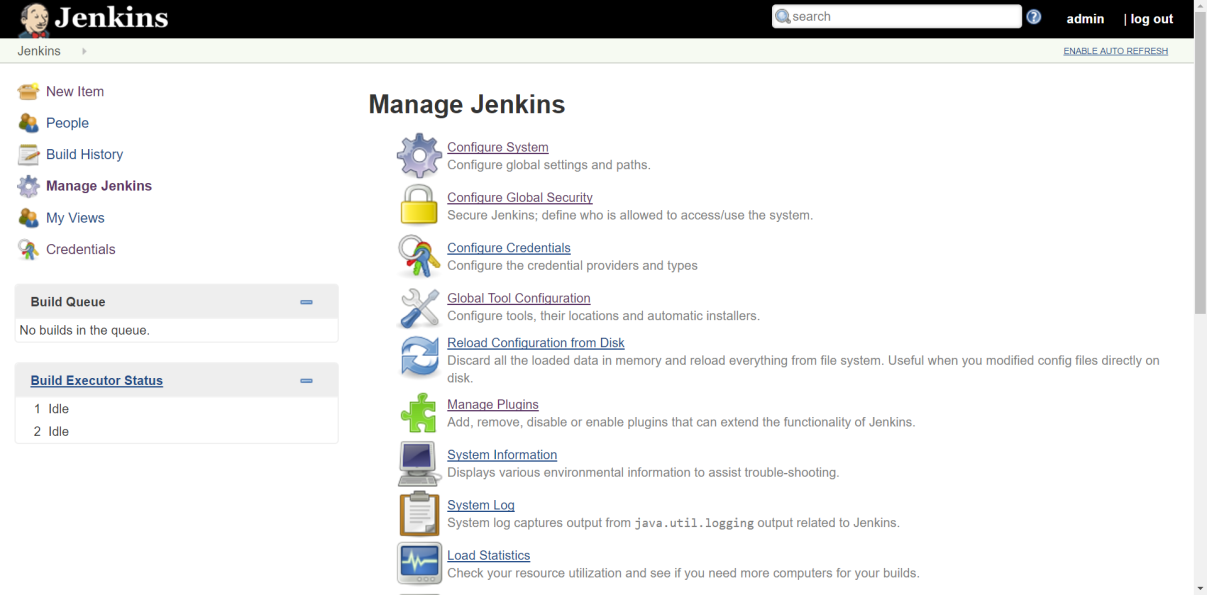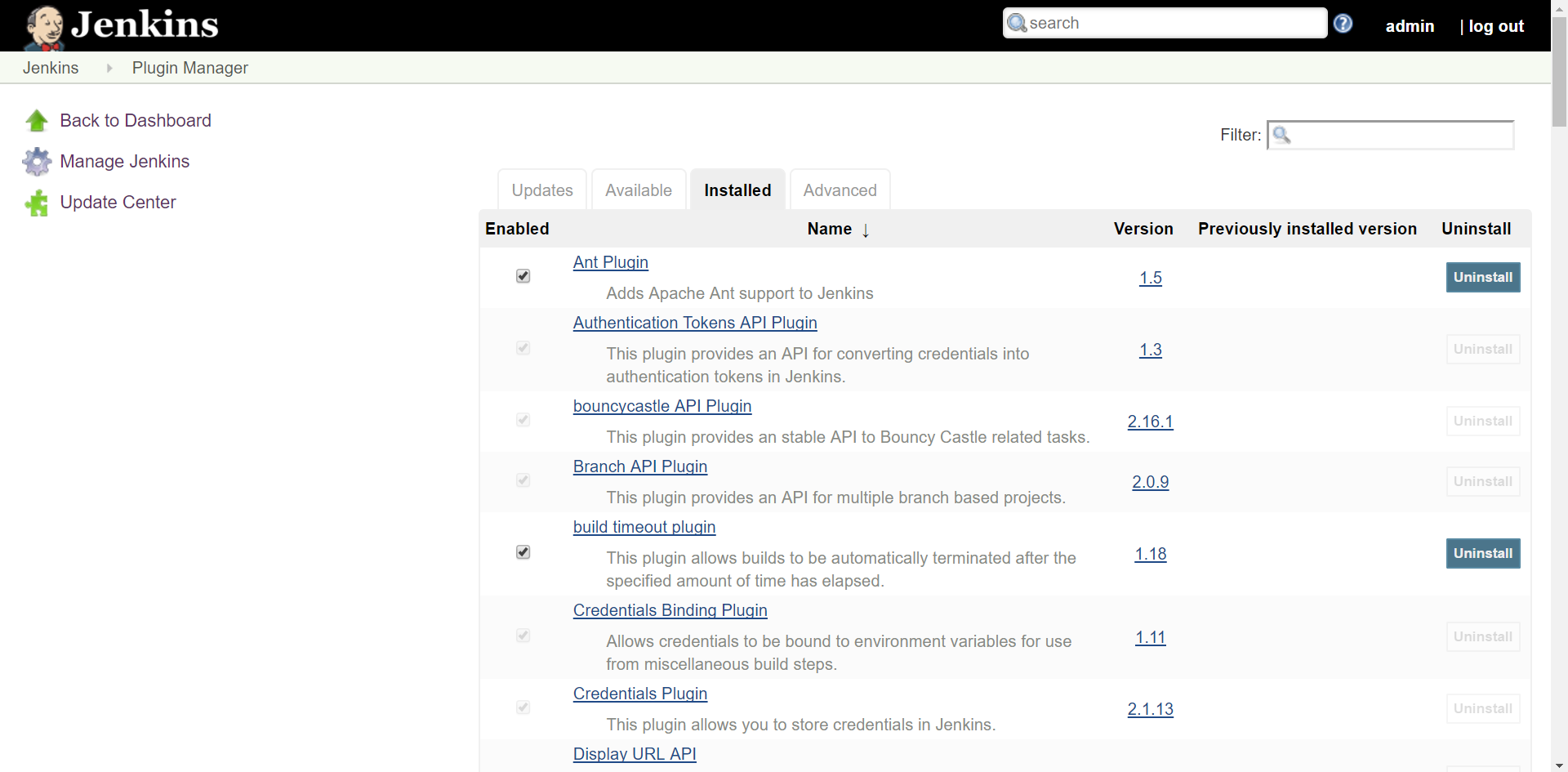The Jenkins dashboard is the place where all the operations related to CI and CD can be managed:

Click on the Manage Jenkins link on the Jenkins dashboard. Here, we can configure Jenkins, Security, Global Tools, Plugins, Users, and more:

Click on Manage Plugins. You will see the following tabs:
- The
Updatestab provides details on updates available on the installed plugins. - The
Availabletab provides a list of plugins that are not installed yet. - The
Installedtab provides a list of plugins that are already installed. - The
Advancedtab contains sections to configure proxies so we can download plugins even after we are behind the proxy. It also provides sections to upload HPI files for plugins in case we have already downloaded the plugin from the internet:

In the Manage Jenkins section, click on Manage Nodes.
By default, the system on which Jenkins is installed is a master node. This is the section that can be utilized to create the master agent architecture that we will cover later in the book:

In the next section, we will cover different kinds of configuration available in the Manage Jenkins section.



